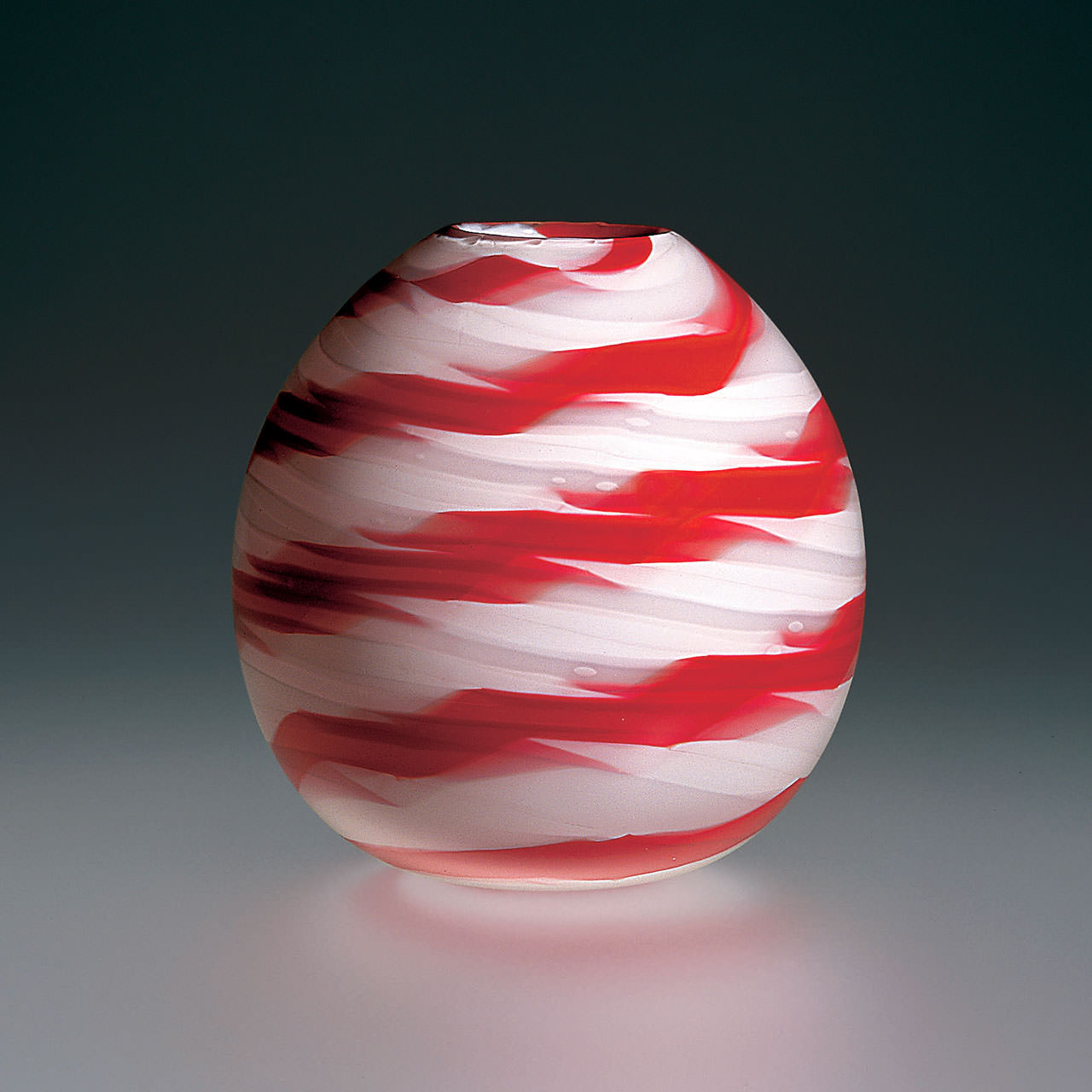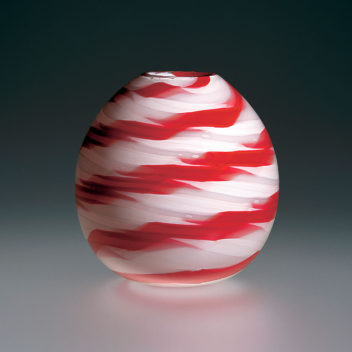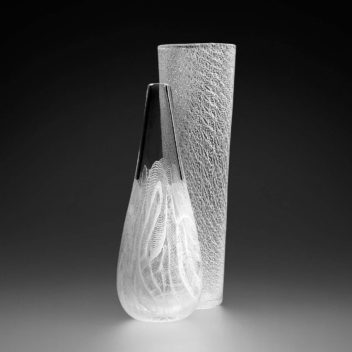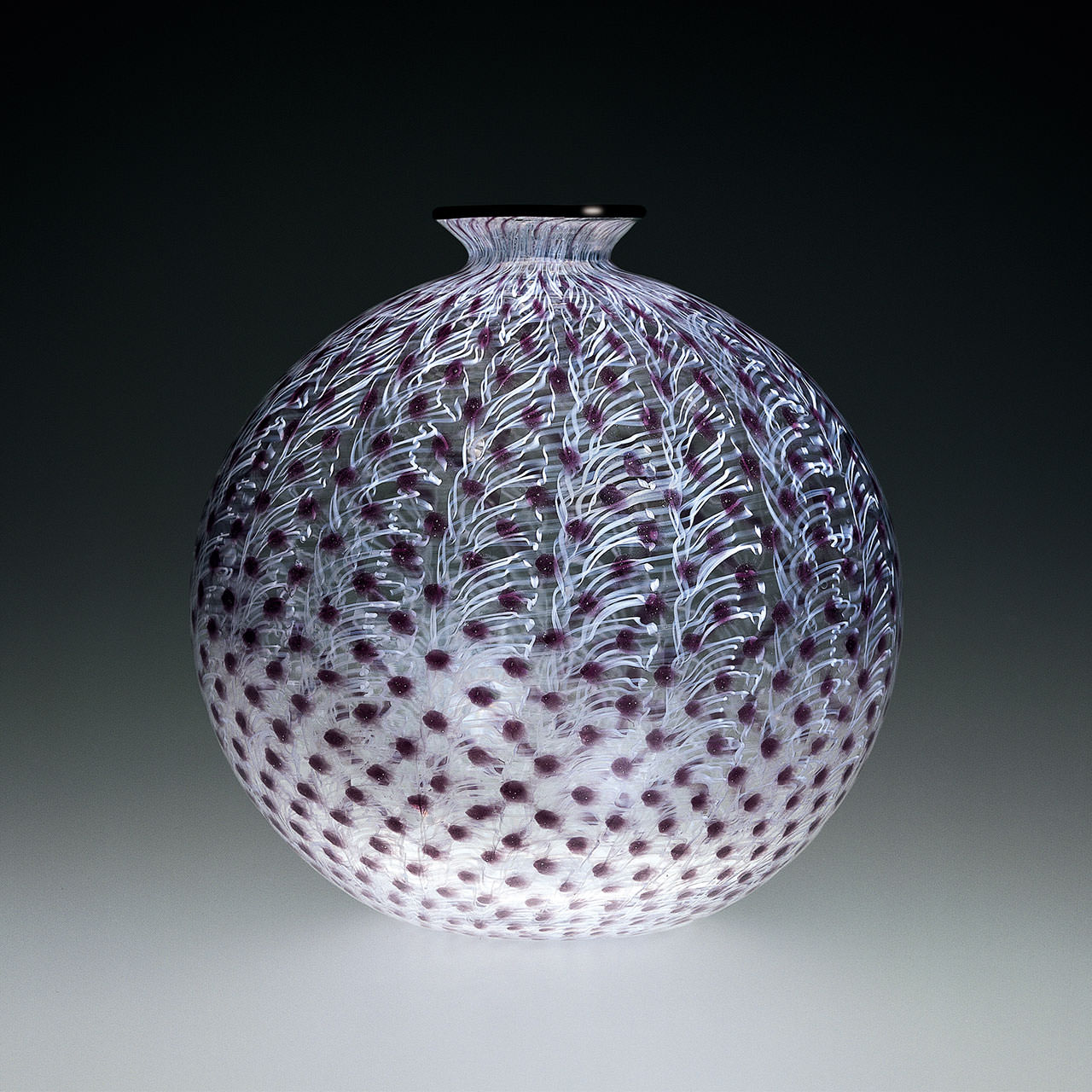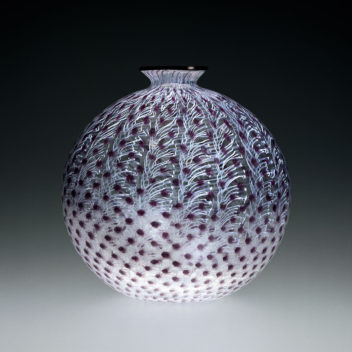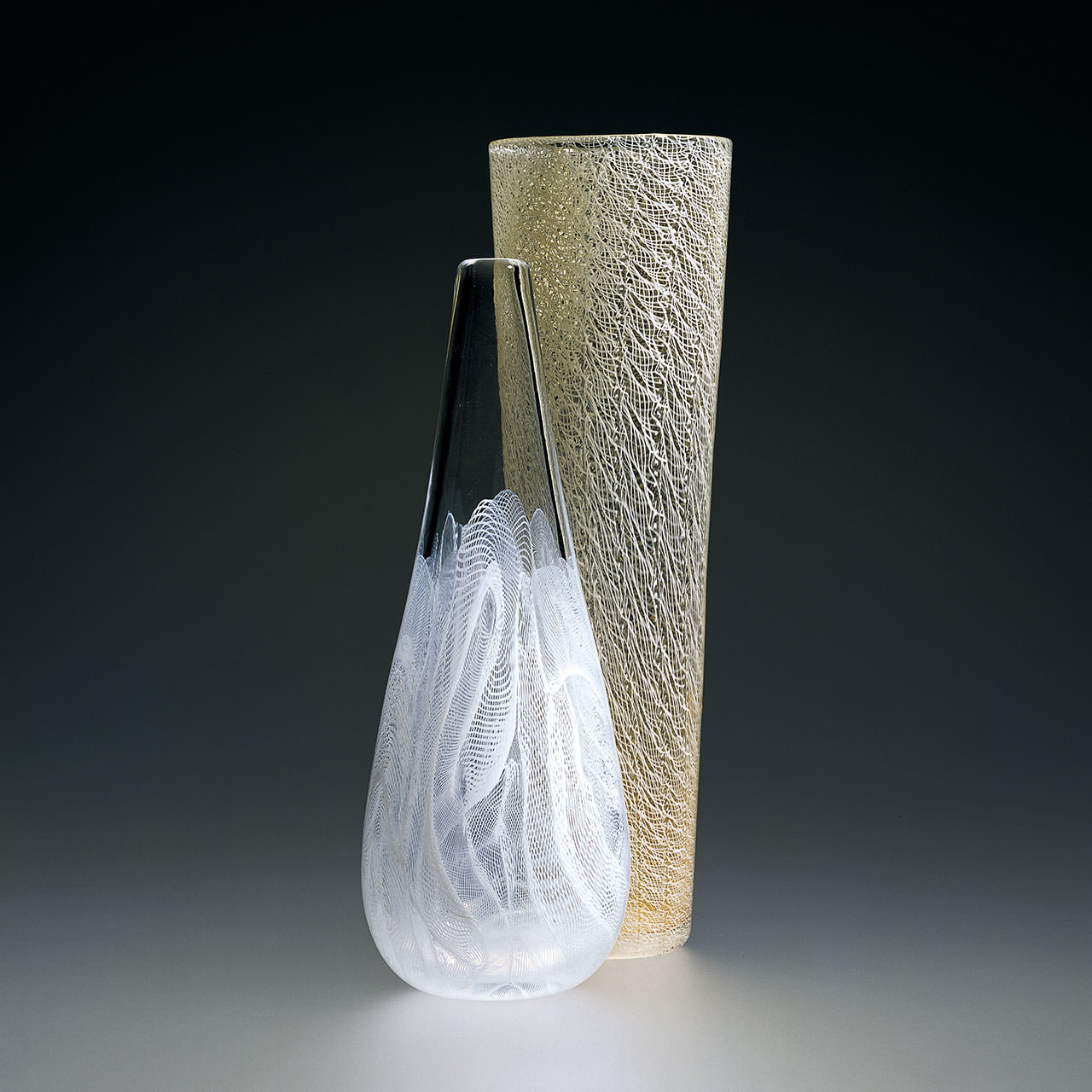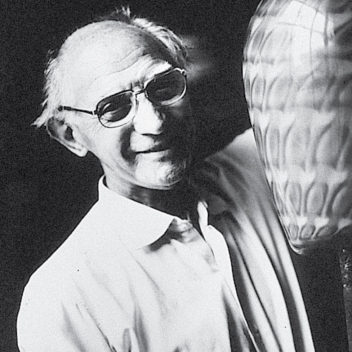
Archimede Seguso 1909–1999
Born on Murano and the son of the maestro Antonio Seguso, Archimede Seguso began work at a very early age in the Vetreria Artistica Barovier, where his father was a partner. In 1933, he was one of the founding partners of the Artistica Vetreria e Soffieria Barovier Seguso & Ferro, which was later to become the Seguso Vetri d’Arte. Here, Archimede worked asmaestro of the principal team crafting the pieces designed by Flavio Poli, and later his own pieces inspired by the Novecento style. He sold his share of the workshop to his partners and, in 1946, founded a new workshop, the Vetreria Artistica Archimede Seguso, where he was first maestro and creator of almost all the works produced there. The first glass pieces were still inspired by the Novecento, as were his sculptures modeled in hot glass; at the same time he experimented with thin blown glass textured in many ways, adapting ancient decorative techniques to the styles of the ’50s such as, for example, the variations of filigrana that he presented throughout the decade (Merletti, Composizione Lattimo, Piume, etc.). During the ’60s and ’70s, he created intensely colored glass works such as the colori sovrapposti and the fasce sovrapposte, and further pushed the filigrana technique with his Spinati, and a petali glass pieces. Later on, he based his production on strong contrasting colors. Among his last works is the series of sculptures called Rotture, conceived as original works and made in solid massiccio sommerso glass, a realization of the profound reflections of this artist who later died on the island of Murano.
